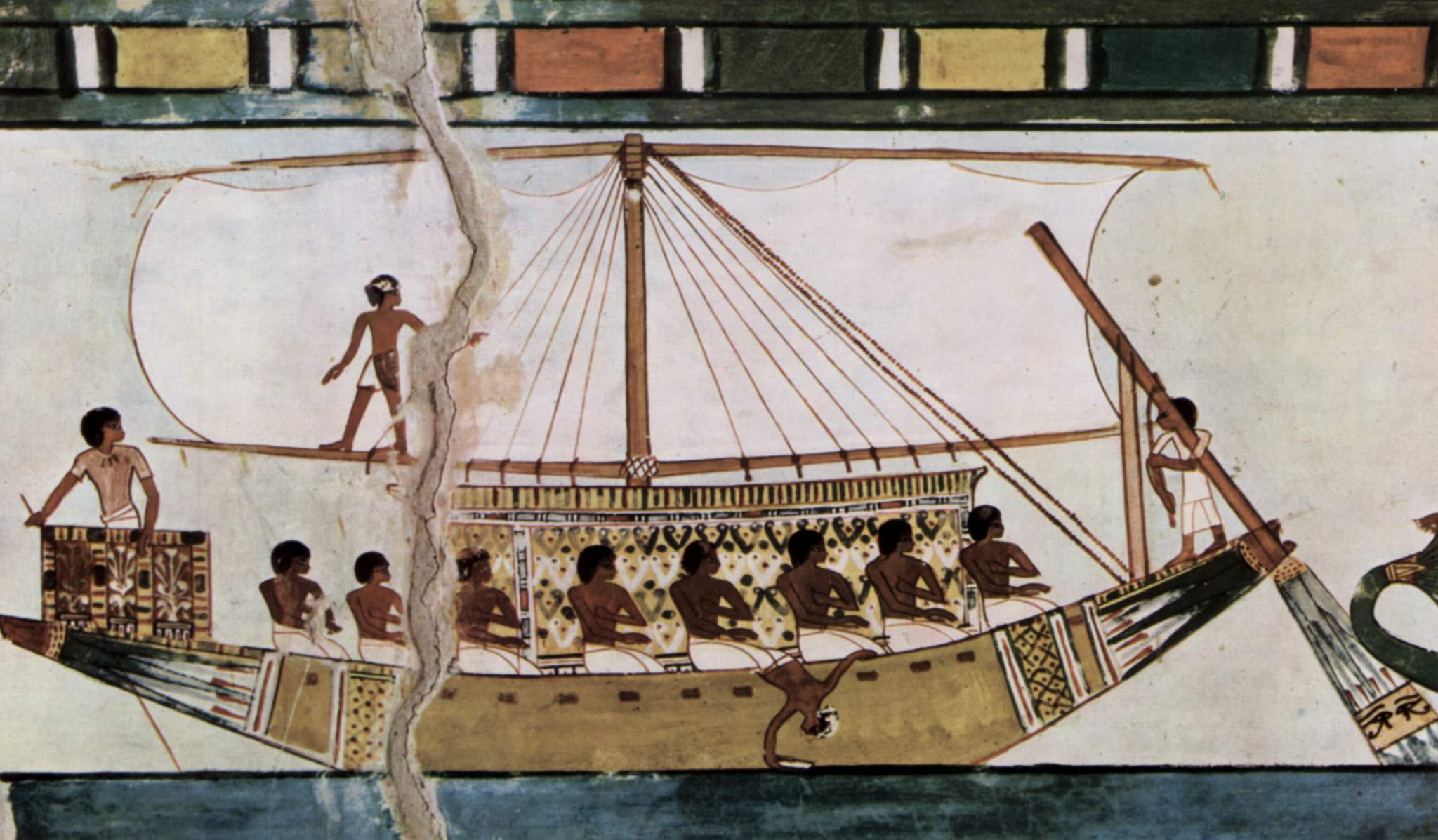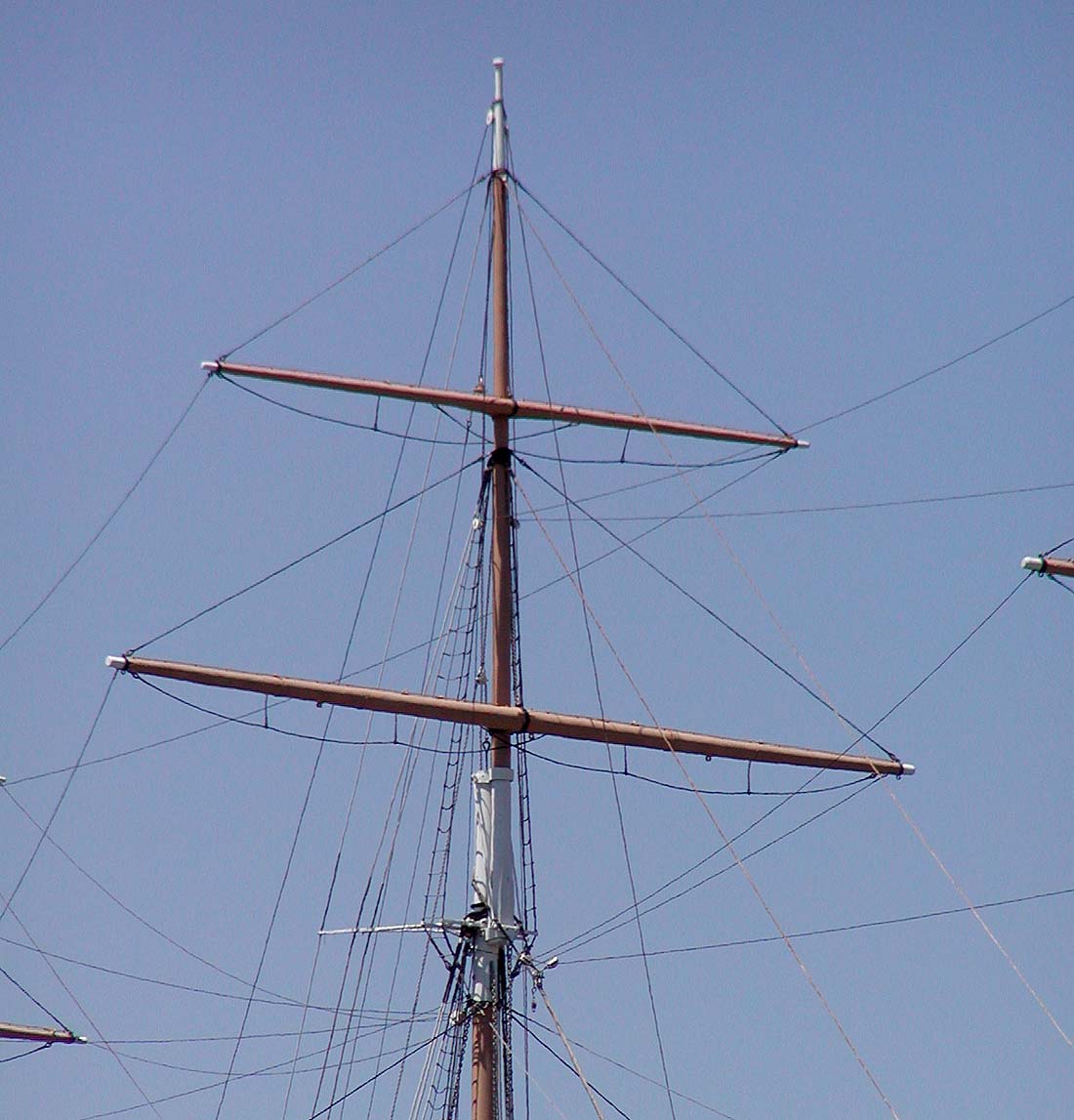|
Royal (sail)
A royal is a small sail flown immediately above the topgallant on square rigged sailing ships. It was originally called the "topgallant royal" and was used in light and favorable winds. Royal sails were normally found only on larger ships with masts tall enough to accommodate the extra canvas. Royals were introduced around the turn of the 18th century but were not usually flown on the mizzenmast until the end of that century. It gave its name to a Dutch term for a light breeze—the Royal Sail Breeze or ''bovenbramzeilskoelte'' was a Force 2 wind on the Beaufort Scale The Beaufort scale ( ) is an empirical measure that relates wind speed to observed conditions at sea or on land. Its full name is the Beaufort wind force scale. It was devised in 1805 by Francis Beaufort a hydrographer in the Royal Navy. It ....García-Herrera, R., D. Wheeler, G.P. Können, F.B. Koek and M.R. Prieto (2003). CLIWOC multilingual meteorological dictionary, An English-Spanish-Dutch-French Dicti ... [...More Info...] [...Related Items...] OR: [Wikipedia] [Google] [Baidu] |
Krusenstern Royal Sails
Krusenstern or Kruzenshtern may refer to: * Adam Johann von Krusenstern (1770–1846), Baltic German admiral and explorer who circumnavigated the world in Russian service Places named after von Krusenstern * Krusenstern (crater), on the Moon * Krusenstern Island (other) ** A small group of islands in the Middendorff Bay ** Little Diomede Island, in Alaska ** Ailuk Atoll, in the Marshall Islands ** Tikehau-Atoll, of Tuamotu Archipelago in French Polynesia ** Krusenstern Island, Krusenstern Reef, or Krusenstern Rock, a phantom reef south of the Northwestern Hawaiian Islands * Krusenstern Strait, Kuril Islands, Russia * Cape Krusenstern, in Alaska ** Cape Krusenstern National Monument in Alaska * Mount Krusenstern, Novaya Zemlya, Russia Other uses * ''Kruzenshtern'' (ship) (until 1946 German ''Padua''), a Russian tall ship training vessel * Krusenstern field, a natural gas field in Russia * Cape Krusenstern, at the west end of Coronation Gulf Coronation Gulf lies b ... [...More Info...] [...Related Items...] OR: [Wikipedia] [Google] [Baidu] |
Sail
A sail is a tensile structure, which is made from fabric or other membrane materials, that uses wind power to propel sailing craft, including sailing ships, sailboats, windsurfers, ice boats, and even sail-powered land vehicles. Sails may be made from a combination of woven materials—including canvas or polyester cloth, laminated membranes or bonded filaments, usually in a three- or four-sided shape. A sail provides propulsive force via a combination of lift and drag, depending on its angle of attack, its angle with respect to the apparent wind. Apparent wind is the air velocity experienced on the moving craft and is the combined effect of the true wind velocity with the velocity of the sailing craft. Angle of attack is often constrained by the sailing craft's orientation to the wind or point of sail. On points of sail where it is possible to align the leading edge of the sail with the apparent wind, the sail may act as an airfoil, generating propulsive force as air pa ... [...More Info...] [...Related Items...] OR: [Wikipedia] [Google] [Baidu] |
Topgallant Sail
On a square rigged sailing vessel, a topgallant sail (topgallant alone pronounced "t'gallant", topgallant sail pronounced "t'garns'l",C.S. Forester, ''Beat to Quarters'', Chapter VI. is the square-rigged sail or sails immediately above the topsail or topsails. It is also known as a gallant or garrant sail. Later full-rigged ships split the topsail (and often the topgallant sail) for easier handling. They thus set two topsails (and possibly two topgallant sails) per mast. The lower topgallant sail is immediately above the upper topsail. The upper or only topgallant sail is set from the top of the topgallant mast. If there is a lower topgallant it is set from midway down the topgallant mast. A staysail A staysail ("stays'l") is a fore-and-aft rigged sail whose luff can be affixed to a stay running forward (and most often but not always downwards) from a mast to the deck, the bowsprit, or to another mast. Description Most staysails a ... set on a stay running forward ... [...More Info...] [...Related Items...] OR: [Wikipedia] [Google] [Baidu] |
Square Rig
Square rig is a generic type of sail plan, sail and rigging arrangement in which a sailing ship, sailing vessel's primary driving sails are carried on horizontal spar (sailing), spars that are perpendicular (or wikt:square#Adjective, square) to the median plane of the keel and masts of the vessel. These spars are called and their tips, outside the lifts, are called the . A ship mainly rigged so is called a square-rigger. In "customs and traditions of the Royal Navy, Jackspeak" (Royal Navy slang), it also refers to the uniforms of the Royal Navy, dress uniform of Junior Ratings. History Single sail square rigs were used by the ancient Egyptians, the Phoenicians, the Greeks, the Romans, and the Celts. Later the Scandinavians, the Germanic peoples, and the Slavs adopted the single square-rigged sail, with it becoming one of the defining characteristics of the classic “Viking” ships.The Viking ship's single square-rigged sail. http://Longshipco.org/sail.html Retrieved 2018-8- ... [...More Info...] [...Related Items...] OR: [Wikipedia] [Google] [Baidu] |
Sailing Ship
A sailing ship is a sea-going vessel that uses sails mounted on Mast (sailing), masts to harness the power of wind and propel the vessel. There is a variety of sail plans that propel sailing ships, employing Square rig, square-rigged or Fore-and-aft rig, fore-and-aft sails. Some ships carry square sails on each mast—the brig and full-rigged ship, said to be "ship-rigged" when there are three or more masts. Others carry only fore-and-aft sails on each mast, for instance some schooners. Still others employ a combination of square and fore-and-aft sails, including the barque, barquentine, and brigantine. Early sailing ships were used for river and coastal waters in Ancient Egypt and the Mediterranean. The Austronesian peoples developed maritime technologies that included the fore-and-aft crab-claw sail and with catamaran and outrigger boat, outrigger hull configurations, which enabled the Austronesian expansion into the islands of the Indo-Pacific. This expansion originated in Ta ... [...More Info...] [...Related Items...] OR: [Wikipedia] [Google] [Baidu] |
Mizzenmast
The mast of a sailing vessel is a tall spar, or arrangement of spars, erected more or less vertically on the median line of a ship or boat. Its purposes include carrying sail A sail is a tensile structure, which is made from fabric or other membrane materials, that uses wind power to propel sailing craft, including sailing ships, sailboats, windsurfers, ice boats, and even sail-powered land vehicles. Sails may b ...s, spars, and derricks, giving necessary height to a navigation light, look-out position, naval flag signalling, signal yard (sailing), yard, Fire-control system#Naval fire control, control position, antenna (radio), radio aerial, or signal lamp. Large ships have several masts, with the size and configuration depending on the style of ship. Nearly all sailing masts are guyed mast, guyed. Until the mid-19th century, all vessels' masts were made of wood formed from a single or several pieces of timber which typically consisted of the trunk of a conifer tree. F ... [...More Info...] [...Related Items...] OR: [Wikipedia] [Google] [Baidu] |
Dutch Language
Dutch ( ) is a West Germanic languages, West Germanic language of the Indo-European language family, spoken by about 25 million people as a first language and 5 million as a second language and is the List of languages by total number of speakers, third most spoken Germanic language. In Europe, Dutch is the native language of most of the population of the Netherlands and Flanders (which includes 60% of the population of Belgium). "1% of the EU population claims to speak Dutch well enough in order to have a conversation." (page 153). Dutch was one of the official languages of South Africa until 1925, when it was replaced by Afrikaans, a separate but partially Mutual intelligibility, mutually intelligible daughter language of Dutch. Afrikaans, depending on the definition used, may be considered a sister language, spoken, to some degree, by at least 16 million people, mainly in South Africa and Namibia, and evolving from Cape Dutch dialects. In South America, Dutch is the native l ... [...More Info...] [...Related Items...] OR: [Wikipedia] [Google] [Baidu] |
Beaufort Scale
The Beaufort scale ( ) is an empirical measure that relates wind speed to observed conditions at sea or on land. Its full name is the Beaufort wind force scale. It was devised in 1805 by Francis Beaufort a hydrographer in the Royal Navy. It was officially adopted by the Royal Navy and later spread internationally. History The scale that carries Beaufort's name had a long and complex evolution from the previous work of others (including Daniel Defoe the century before). In the 18th century, naval officers made regular weather observations, but there was no standard scale and so they could be very subjective — one man's "stiff breeze" might be another's "soft breeze"—: Beaufort succeeded in standardising a scale.reprinted in 2003 by Dover Publications./ref> The scale was devised in 1805 by Francis Beaufort (later Rear Admiral), a hydrographer and a Royal Navy officer, while serving on , and refined until he was Hydrographer of the Navy in the 1830s, when it was ado ... [...More Info...] [...Related Items...] OR: [Wikipedia] [Google] [Baidu] |
KNMI (institute)
The Royal Netherlands Meteorological Institute (, ; KNMI) is the Dutch national weather forecasting service, which has its headquarters in De Bilt, in the province of Utrecht, central Netherlands. The primary tasks of KNMI are weather forecasting, monitoring of climate changes and monitoring seismic activity. KNMI is also the national research and information centre for climate, climate change and seismology. History KNMI was established by royal decree of King William III on 31 January 1854 under the title "Royal Meteorological Observatory". Professor C. H. D. Buys Ballot was appointed as the first Director. The year before Professor Ballot had moved the Utrecht University Observatory to the decommissioned fort at Sonnenborgh. It was only later, in 1897, that the headquarters of the KNMI moved to the Koelenberg estate in De Bilt. The "Royal Meteorological Observatory" originally had two divisions, the land branch under Dr. Frederik Wilhelm Christiaan Krecke and the marine ... [...More Info...] [...Related Items...] OR: [Wikipedia] [Google] [Baidu] |






